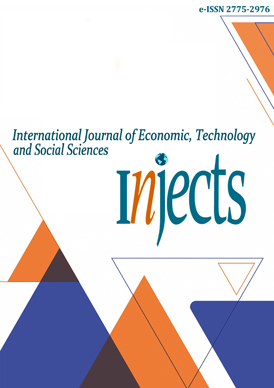The Relationship between Interest in Learning and Mastery of PDTM Theory with Learning Outcomes of PDTM Class X Subjects of the Machining Engineering Expertise Program of SMK Negeri 1 Percut Seituan
DOI:
https://doi.org/10.53695/injects.v3i1.808Abstract
This study aims to determine: (1) the relationship between interest in learning and student learning outcomes, (2) the relationship between mastery of theory and student learning outcomes, and (3) the relationship between interest in learning and mastery of theory on student learning outcomes. This type of research is correlational research. The research subjects were students of class X Mechanical Engineering at SMK N 1 Percut Sei Tuan as many as 64 students. Data collection techniques using questionnaires, test questions and documentation of learning outcomes. The validity test uses the product moment correlation formula and the reliability test uses the Cronbach alpha formula. The data analysis technique uses the product moment correlation formula. The results showed that: (1) there was a relationship between interest in learning and student learning outcomes. This is indicated by the value of r arithmetic greater than r table (0.490>0.246) and a significance value of 0.000 <0.05; (2) there is a relationship between mastery of theory on student learning outcomes. This is indicated by the value of rcount greater than rtable (0.457>0.246) and a significance value of 0.000<0.05; and (3) the relationship between learning interest and mastery of theory on student learning outcomes. This is indicated by the correlation coefficient or R of 0.605> 0.246, and a significance value of 0.000 <0.05.Downloads
Published
2023-01-02
How to Cite
Siman. (2023). The Relationship between Interest in Learning and Mastery of PDTM Theory with Learning Outcomes of PDTM Class X Subjects of the Machining Engineering Expertise Program of SMK Negeri 1 Percut Seituan. International Journal of Economic, Technology and Social Sciences (Injects), 3(1), 276–283. https://doi.org/10.53695/injects.v3i1.808
Issue
Section
Articles
License

This work is licensed under a Creative Commons Attribution-ShareAlike 4.0 International License.




